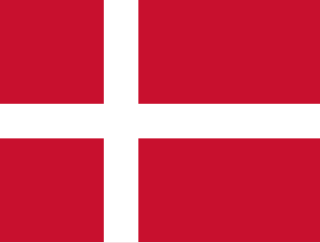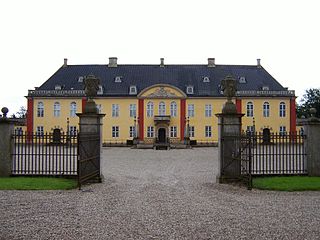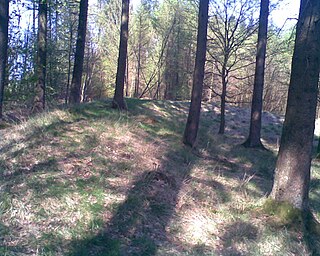
Vejle Fjord is an East Jutland-type fjord in Denmark. It is approximately 22 km (14 mi) in length, and it stretches east from the town of Vejle at its head to the towns of Trelde Næs on the south side and Juelsminde on the north side at the mouth. The fjord's generally calm surface waters are surrounded by low forested hills shaped by glaciers during the last ice age. [1]

The eastern coast of the Jutland Peninsula, consisting of Danish Jutland and German Schleswig-Holstein features a type of narrow bay called Förde in German and fjord in Danish. These bays are of glacial origin, but the glacial mechanics were different from those of Norwegian Fjords and also from those of Swedish and Finnish Fjards.

Denmark, officially the Kingdom of Denmark, is a Nordic country and the southernmost of the Scandinavian nations. Denmark lies southwest of Sweden and south of Norway, and is bordered to the south by Germany. The Kingdom of Denmark also comprises two autonomous constituent countries in the North Atlantic Ocean: the Faroe Islands and Greenland. Denmark proper consists of a peninsula, Jutland, and an archipelago of 443 named islands, with the largest being Zealand, Funen and the North Jutlandic Island. The islands are characterised by flat, arable land and sandy coasts, low elevation and a temperate climate. Denmark has a total area of 42,924 km2 (16,573 sq mi), land area of 42,394 km2 (16,368 sq mi), and the total area including Greenland and the Faroe Islands is 2,210,579 km2 (853,509 sq mi), and a population of 5.8 million.

Vejle is a town in Denmark, in the southeast of the Jutland Peninsula at the head of Vejle Fjord, where the Vejle River and Grejs River and their valleys converge. It is the site of the councils of Vejle Municipality (kommune) and the Region of Southern Denmark. The city has a population of 54,862, making it the ninth largest city in Denmark. Vejle Municipality has a population of 111,743. The city is part of the Triangle Region, which includes the neighbouring cities of Kolding and Fredericia.
Public works projects have re-shaped the small rivers and countryside surrounding the fjord since the Middle Ages.

In the history of Europe, the Middle Ages lasted from the 5th to the 15th century. It began with the fall of the Western Roman Empire and merged into the Renaissance and the Age of Discovery. The Middle Ages is the middle period of the three traditional divisions of Western history: classical antiquity, the medieval period, and the modern period. The medieval period is itself subdivided into the Early, High, and Late Middle Ages.
Highway E45 crosses the fjord just east of the town of Vejle on the Vejle Fjord Bridge. [2]

The European route E 45 goes between Norway and Italy, through Finland, Sweden, Denmark, Germany and Austria. With a length of about 5,190 kilometres (3,225 mi), it is the longest north-south European route.

Vejle Fjord Bridge is a cantilever bridge that spans Vejle Fjord between Mølholm and Nørremarken near the town of Vejle in Denmark. The bridge is 1712 metres long, the longest span is 110 metres, and the maximum clearance to the sea is 40 metres. The bridge has 15 spans and carries the European route E45 over the fjord.















